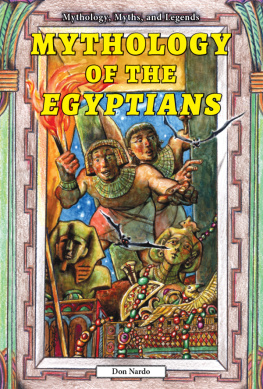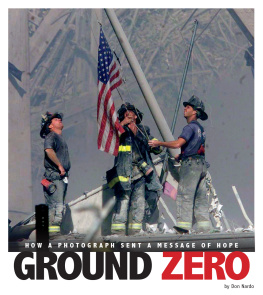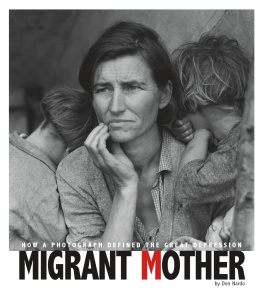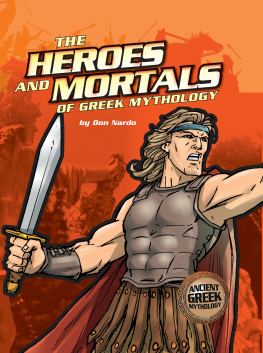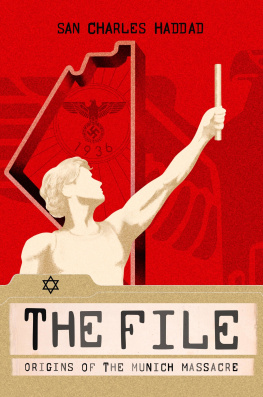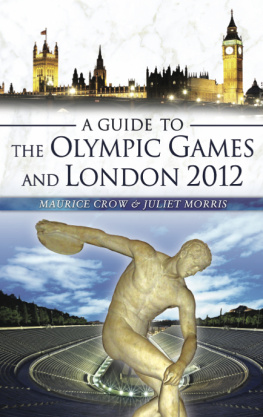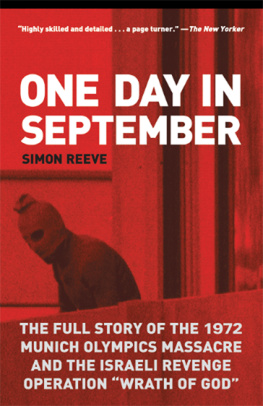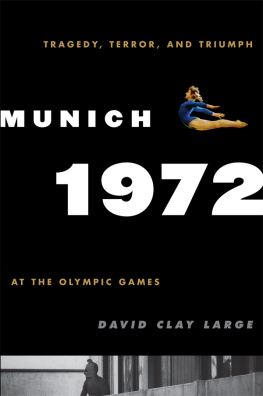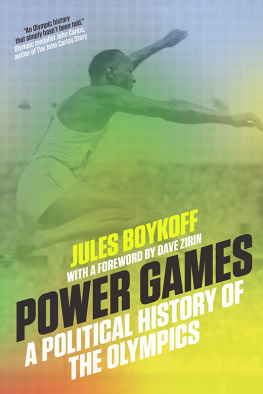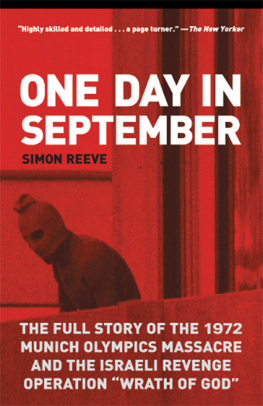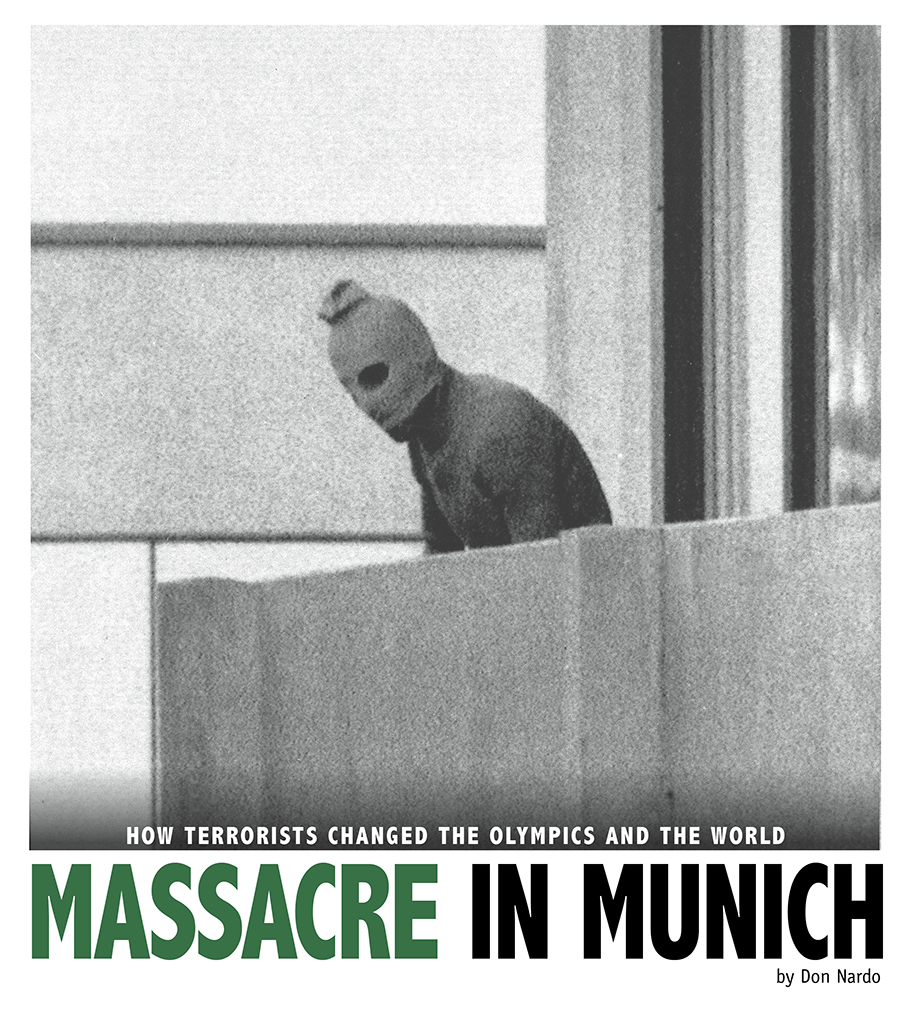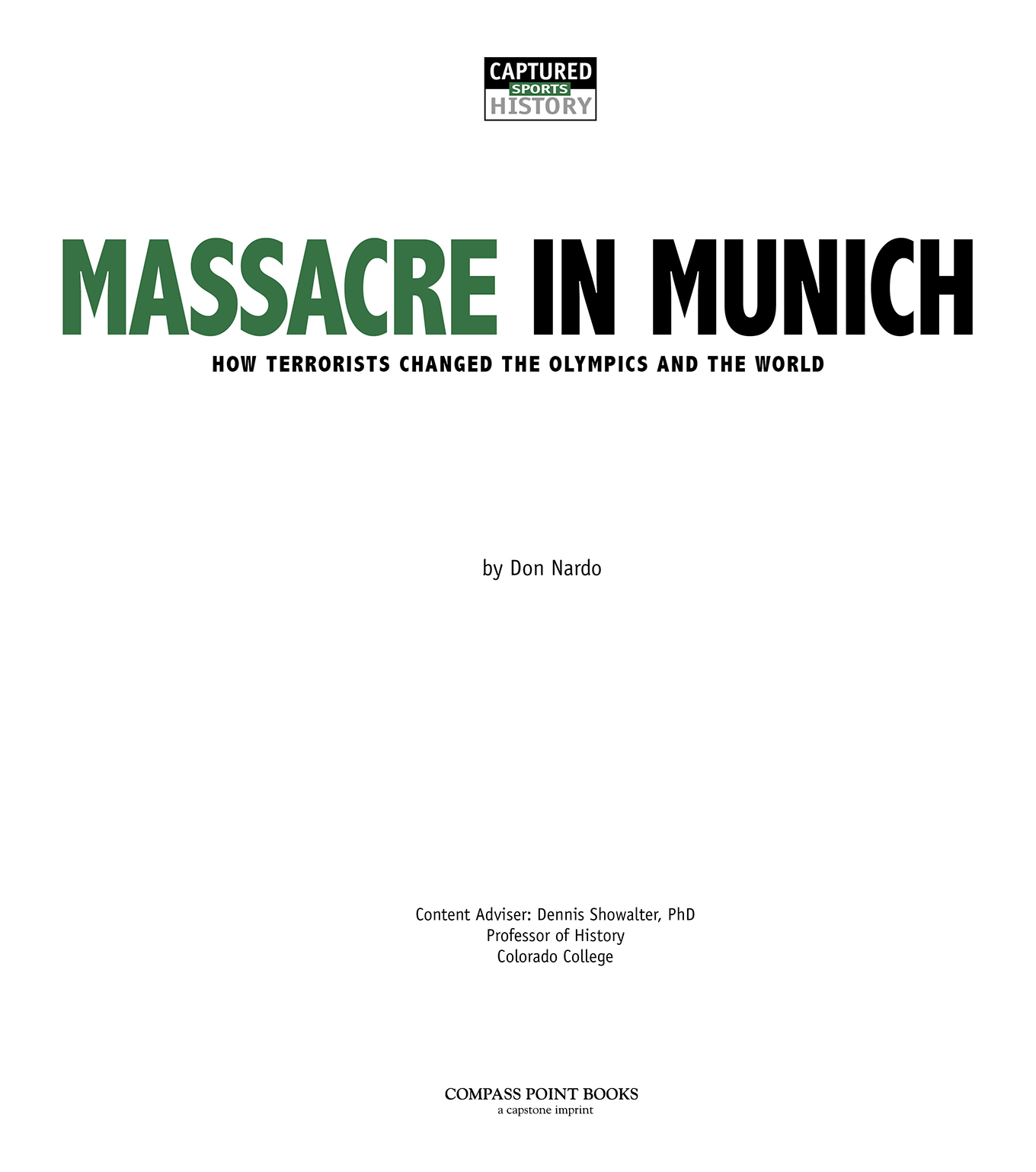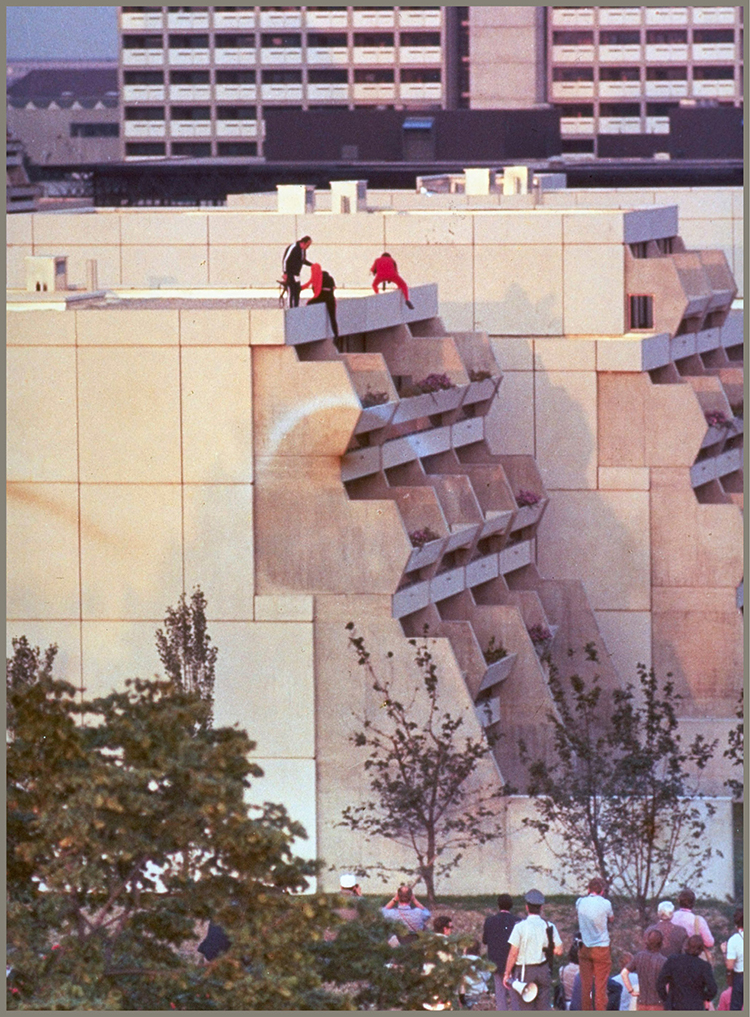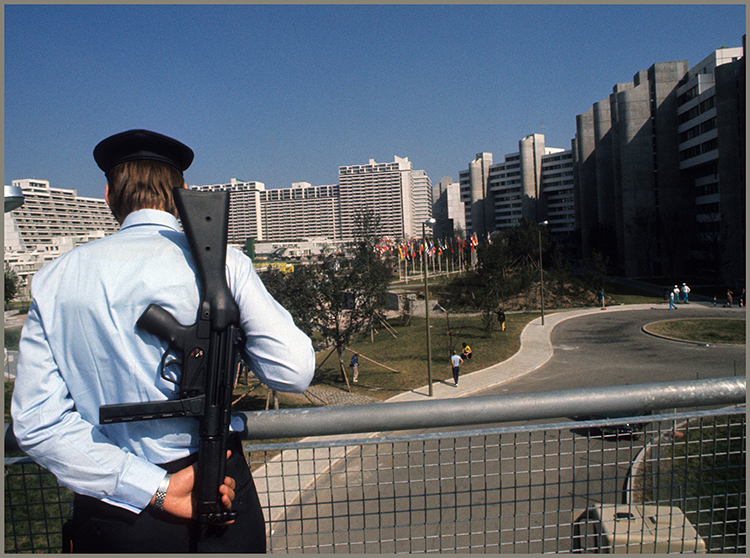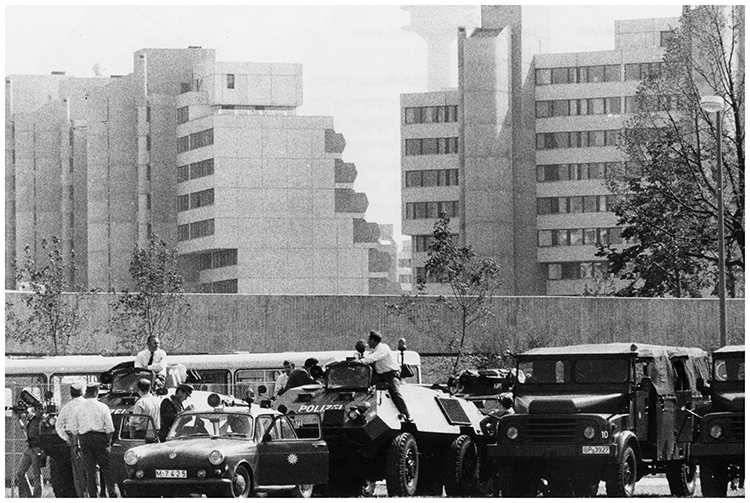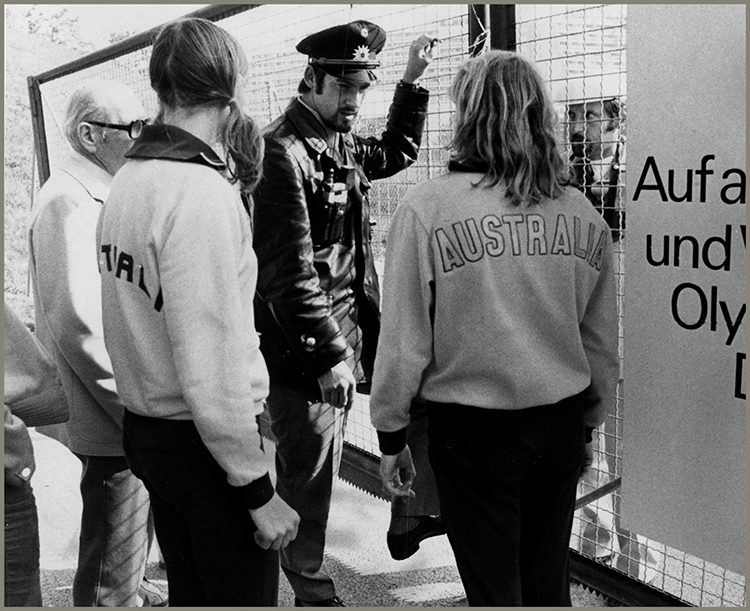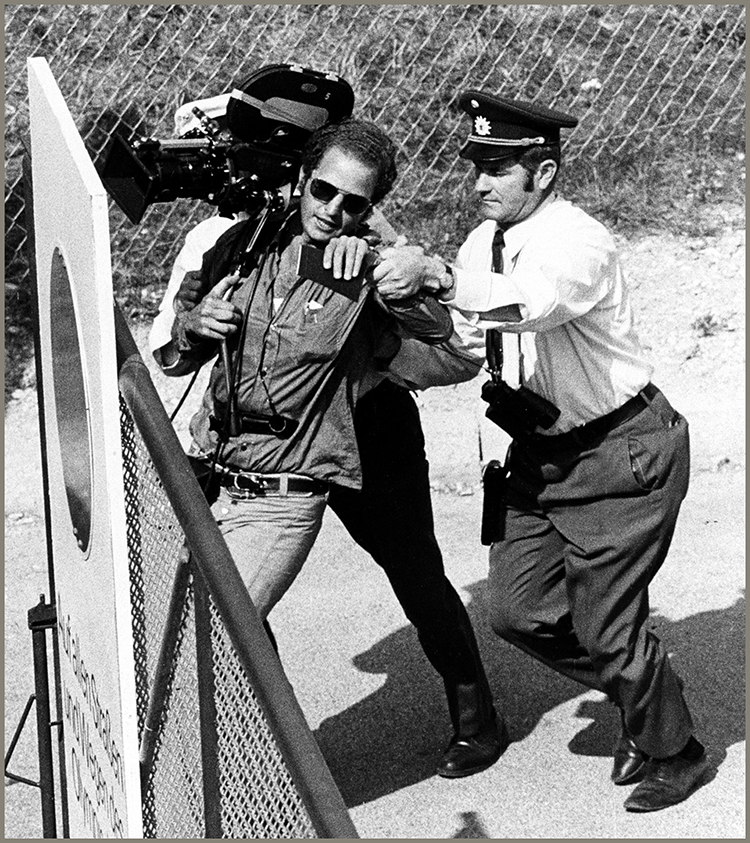Chapter One
INTO THE WORLDS AWARENESS
In the early morning of Tuesday, September 5, 1972, Will Grimsley awoke to what turned out to be the most important door-knock of his life. The veteran Associated Press (AP) sportswriter was sure no one would bother him at dawn unless something significant was happening.
As for what that something might be, Grimsley had no clue. The summer Olympic Games, held this time in Munich, West Germany, were a little more than half over. Dubbed the cheerful Olympics by the Germans, so far they had lived up to that hopeful bit of hype.
Dragging himself out of bed, Grimsley lumbered toward the door of his assigned quartersRoom 4B in the area set aside for Olympic Village. (The village was the fenced-in group of buildings where the athletes stayed.) Of the many AP reporters covering the games, Grimsley was the most experienced. Maybe one of his colleagues had a practical question of some kind. Perhaps it had to do with the best way to cover a specific athletic event. But why now? Couldnt it wait until after breakfast?
To Grimsleys surprise, he found that his visitor was not one of his AP co-workers. Instead the door opened to a messenger with a grim expression on his face. village, the messenger went on. The press and visitors are locked out.
As an experienced reporter, Grimsley was not worried about being locked out of a crime scene by police or security forces. He quickly dressed himself to look like an Olympic official. The disguise got him into both the Olympic Village and the temporary command center the police had set up inside the village. No one questioned him.
Like the fly on the wall, Grimsley was able to see what was happening. The West German police knew only that an unknown number of men were holding some of the Israeli athletes and coaches hostage. The details were still unclear.
West German sharpshooters worked their way up Olympic Village buildings in a futile attempt to confront Palestinian terrorists.
Later that morning, future AP reporter Robert H. Reid was sitting with his wife in the stands of Munichs Olympic Parkthe main stadium for the games. The American couple were living temporarily in Augsburg, a small city near Munich. Reid was stationed in West Germany while he finished his hitch in the U.S. Army.
For more than a year the couple had been looking forward to seeing the games from the best seats they could get. Now the time had come. It was a beautiful sunny morninghelicopter from the German border police circling over buildings of the nearby village where the athletes lived.
If you shaded your eyes, squinted against the blinding sunlight and knew where to look, you could just make out the images of armed uniformed German police standing on the buildings. Turn away and the horror of what was unfolding seemed to disappear. The horror was that eight Palestinian gunmen from the terrorist group Black September had slipped into the Olympic Village and seized Israeli athletes, coaches, and officials.
A West German police officer stood guard as Olympic events continued during the hostage crisis.
Despite the crisis in the police, he said, was a one-word headline in a German newspaper: Geiselnahme, meaning Hostage Taking.
A border police helicopter circled the Olympic Village September 5, 1972.
INSIDE THE COMMAND POST
In his long career, Associated Press reporter This was the command post, he later recalled. The Olympic patch which had gotten me through the gate of the secured Village permitted me to stride unchallenged inside the ropesstill mistaken as an official American observer.
Officials in the command post were communicating with Israeli Premier We will not deal with terrorists.
Grimsley managed to quietly telephone the AP office at the Olympic press center with news of what was happening. Speaking in a whisper, he told the AP what was going on. But he had a problem, he later wrote: I was the only newsman inside the ropes with access to world-shaking decisionsand it was useless. I didnt know a word of German.
Police closed off the Olympic Village, but it didnt keep some reporters from getting in.
In the late morning, several hundred yards closer to the crime scene, AP sports reporter Karol Stonger was eager to get inside the Olympic Village to cover the crisis. Local police had closed off the main entrances. However, like her colleague Will Grimsley, Stonger was highly resourceful. She borrowed a team jacket from an American swimmer and wet her hair to make it appear shed recently been in the pool. In that clever disguise, she walked right past the guards.
A police officer blocked the gate to the Olympic Village as two Australian athletes tried to enter.
Stonger climbed up onto the roof of a building that overlooked the Israeli teams apartments. From there she could see part way into the room where the hostages were being held. And the hostage takers could see her. For the next 12 hours she watched the drama unfold. She saw the kidnappers make their primary demandan exchange of the Israeli hostages for some Palestinians held in Israeli prisons.
One of Stongers AP associates, German photographer photo of the crisis.
A cameraman was thrown out of the Olympic Village after he tried to film the Israeli teams apartment building.
To line up the shot, Strumpf positioned himself on a building facing the , Strumpf saw a terrorist standing on the balcony. The unknown Palestinians face was hidden by a ski mask.
The photo of a masked Palestinian terrorist instantly brings to mind the horror of the 1972 hostage crisis at the Munich Olympics.
Strumpf quickly snapped the cameras shutter and later found that hed created an arresting, chilling image. To the viewer, the figure appeared to lack all traces of humanity. It was as if an alien being had appeared from some unknown place, a monstrous creature staring out over the balcony, searing its soulless image into the worlds awareness.
Strumpfs photo did not just capture the hateful forces that had disrupted the games. It also was a powerful reflection of the evil in all terrorism. Yet as effective as this photo was, it was only one of dozens taken that day by talented photojournalists at the games. Together, they depict a riveting array of historical horror and human tragedy.


